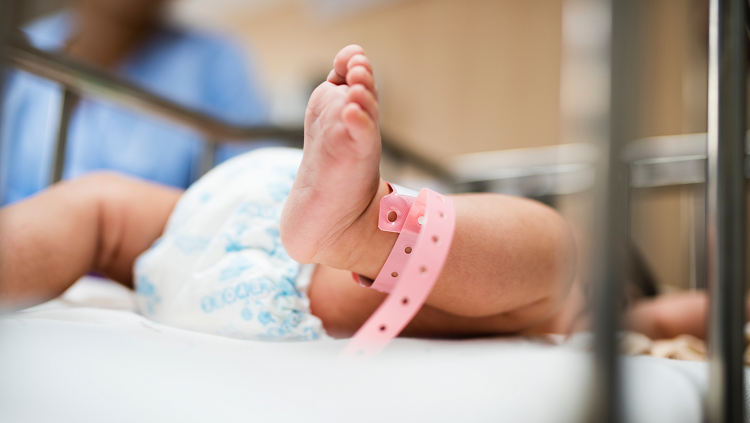
Our brains’ impressive capacity to adapt — its plasticity — is a defining feature of being human. In response to sensory inputs, environmental challenges, and even injury, the brain remodels itself and we’re able to learn and change our behavior. Plasticity peaks in childhood, a time when our brains are primed to change in response to experiences.
There are two kinds of plasticity: experience-expectant and experience-dependent.
In experience-expectant plasticity, external inputs during critical developmental windows guide normal development of the brain. For babies, this includes things like hearing language, seeing faces, and being held. Without these inputs, the brain fails to properly mature. Other species need different kinds of sensory inputs. Young finches, for example, must hear adult birds sing in order to learn to sing themselves.
Experience-dependent plasticity is the remodeling of the brain in response to unique life experiences. These changes are not linked to normal patterns of development and can occur throughout life, both during and outside of critical periods. They even happen in adulthood, as our brains are constantly changing in response to our experiences. For example, people who learn to play the violin show greater cortical development in brain regions controlling the left hand.
Understanding how the brain develops can help scientists find treatments for brain disorders throughout the lifespan — from learning and developmental disorders in children, to neurological disease and traumatic injury in adults. If scientists can learn how to manipulate plasticity in the adult brain, it may one day be possible to rewire faulty circuits or heal injured brains.
Adapted from the 8th edition of Brain Facts by Melissa Galinato.
CONTENT PROVIDED BY
BrainFacts/SfN
References
Dekaban, A. S. (1978). Changes in brain weights during the span of human life: Relation of brain weights to body heights and body weights. Annals of Neurology, 4(4), 345–356. doi: 10.1002/ana.410040410
Fu, M., & Zuo, Y. (2011). Experience-dependent structural plasticity in the cortex. Trends in Neurosciences, 34(4), 177–187. doi: 10.1016/j.tins.2011.02.001
Giedd, J. N. (2008). The teen brain: Insights from neuroimaging. The Journal of Adolescent Health: Official Publication of the Society for Adolescent Medicine, 42(4), 335–343. doi: 10.1016/j.jadohealth.2008.01.007
Giedd, J. N. (2015). Adolescent neuroscience of addiction: A new era. Developmental Cognitive Neuroscience, 16, 192–193. doi: 10.1016/j.dcn.2015.11.002
Holland, D., Chang, L., Ernst, T. M., Curran, M., Buchthal, S. D., Alicata, D., … Dale, A. M. (2014). Structural growth trajectories and rates of change in the first 3 months of infant brain development. JAMA Neurology, 71(10), 1266–1274. doi: 10.1001/jamaneurol.2014.1638
Leigh, S. R. (2004). Brain growth, life history, and cognition in primate and human evolution. American Journal of Primatology, 62(3), 139–164. doi: 10.1002/ajp.20012
Lenroot, R. K., & Giedd, J. N. (2006). Brain development in children and adolescents: Insights from anatomical magnetic resonance imaging. Neuroscience and Biobehavioral Reviews, 30(6), 718–729. doi: 10.1016/j.neubiorev.2006.06.001
Luciana, M., & Ewing, S. W. F. (2015). Introduction to the special issue: Substance use and the adolescent brain: Developmental impacts, interventions, and longitudinal outcomes. Developmental Cognitive Neuroscience, 16, 1–4. doi: 10.1016/j.dcn.2015.10.005
Shankle, W. R., Rafii, M. S., Landing, B. H., & Fallon, J. H. (1999). Approximate doubling of numbers of neurons in postnatal human cerebral cortex and in 35 specific cytoarchitectural areas from birth to 72 months. Pediatric and Developmental Pathology : The Official Journal of the Society for Pediatric Pathology and the Paediatric Pathology Society, 2(3), 244–259. doi: 10.1007/s100249900120
Sowell, E. R., Peterson, B. S., Thompson, P. M., Welcome, S. E., Henkenius, A. L., & Toga, A. W. (2003). Mapping cortical change across the human life span. Nature Neuroscience, 6(3), 309–315. doi: 10.1038/nn1008
Squeglia, L. M., Schweinsburg, A. D., Pulido, C., & Tapert, S. F. (2011). Adolescent Binge Drinking Linked to Abnormal Spatial Working Memory Brain Activation: Differential Gender Effects. Alcoholism, Clinical and Experimental Research, 35(10), 1831–1841. doi: 10.1111/j.1530-0277.2011.01527.x
What to Read Next
Also In Childhood & Adolescence
Trending
Popular articles on BrainFacts.org



















